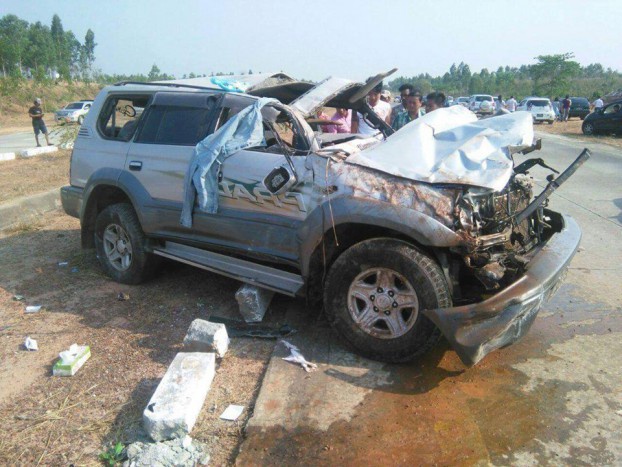A new project to tackle the high number of fatal accidents on the highway linking Burma’s three most important cities has been launched with the cooperation of the World Health Organisation (WHO).
The project, which brings together the WHO and Burma’s health and transportation ministries, as well various government agencies and Rangoon’s University of Public Health, comes in response to concerns about the high rate of traffic fatalities on the Rangoon-Naypyidaw-Mandalay “Death Highway“.
According to WHO figures, Burma’s roads and highways are the second-deadliest in Southeast Asia after Thailand’s, with 20.3 deaths per 100,000 people, or more than 10,000 nationwide in 2015.
The road that connects Burma’s two largest cities and its national capital has long been a source of special concern, owing to its reputation for deadly crashes, which rose from 259 in 2013 to 453 last year.
The project aims to assess road-safety conditions on the highway, with an eye to identifying “black spots” where accidents frequently occur, as well as new ways to reduce the key causes of accidents, according to a statement released by the WHO on Monday.
Although the high rate of death on the highway has often been attributed to shoddy construction, the statement said that other causes, such as burst tires and speeding and other reckless driving habits, are as much to blame as “inadequate road conditions”.
While stricter enforcement of traffic laws and raising awareness of the dangers of risky behaviour behind the wheel are seen as key to bringing down the number of accidents, other measures are also needed, the UN agency said.
“These measures, for instance, could include — amongst others — ensuring that appropriate road signage on the expressway [is] present and well maintained at all times,” said a WHO representative who spoke to DVB.
[related]
Improving the survival rate of those involved in crashes “through better organization and planning of trauma care services” is another way to reduce traffic fatalities, the WHO official added.
The project will also promote commonsense practices such as using seat belts and motorcycle helmets, the official said, adding that the public also needs to be warned about the dangers of using mobile phones while driving.
“An overview of available data suggests that drivers talking on a mobile phone are approximately four times more likely to be involved in a crash than those who are not.”



